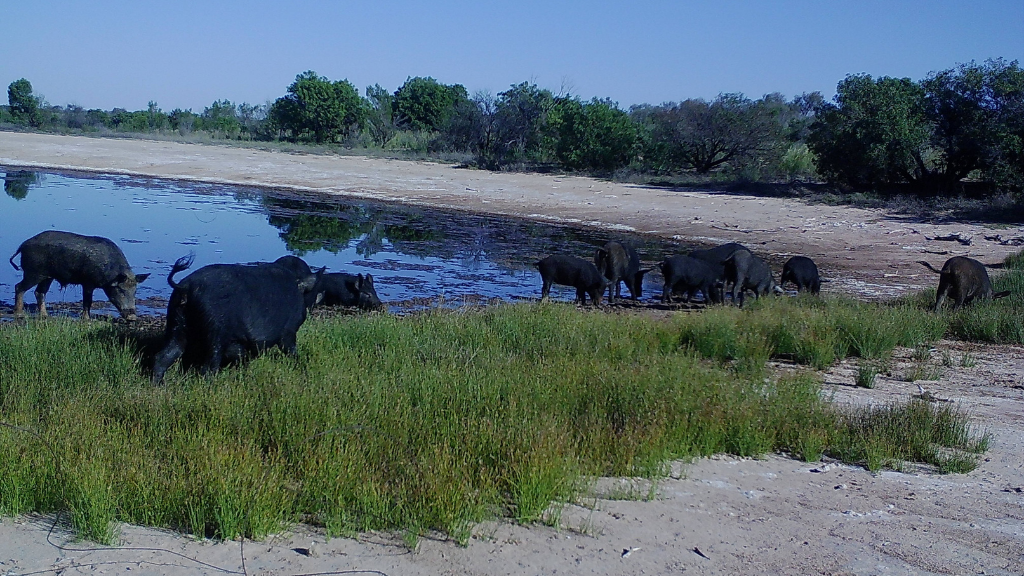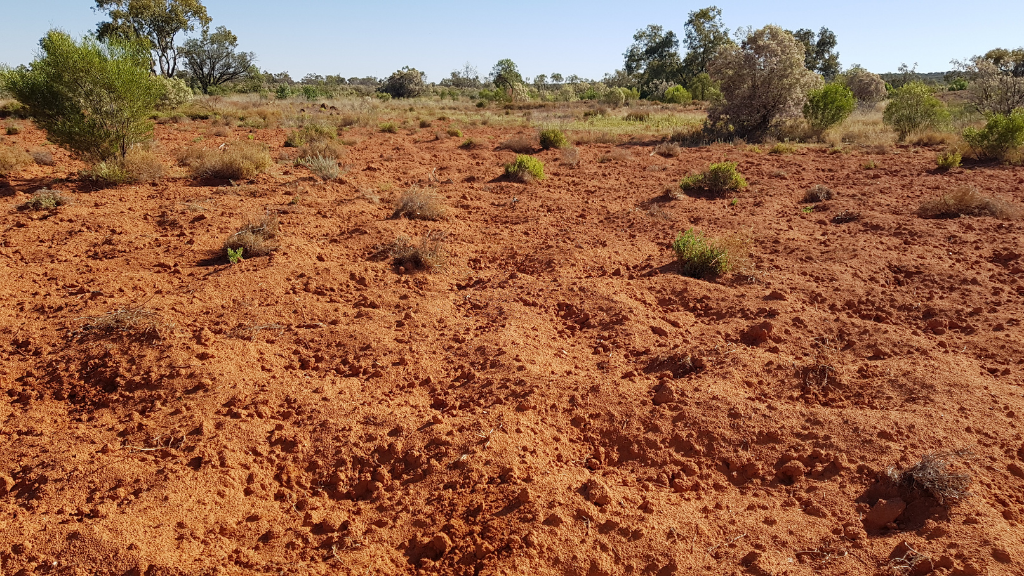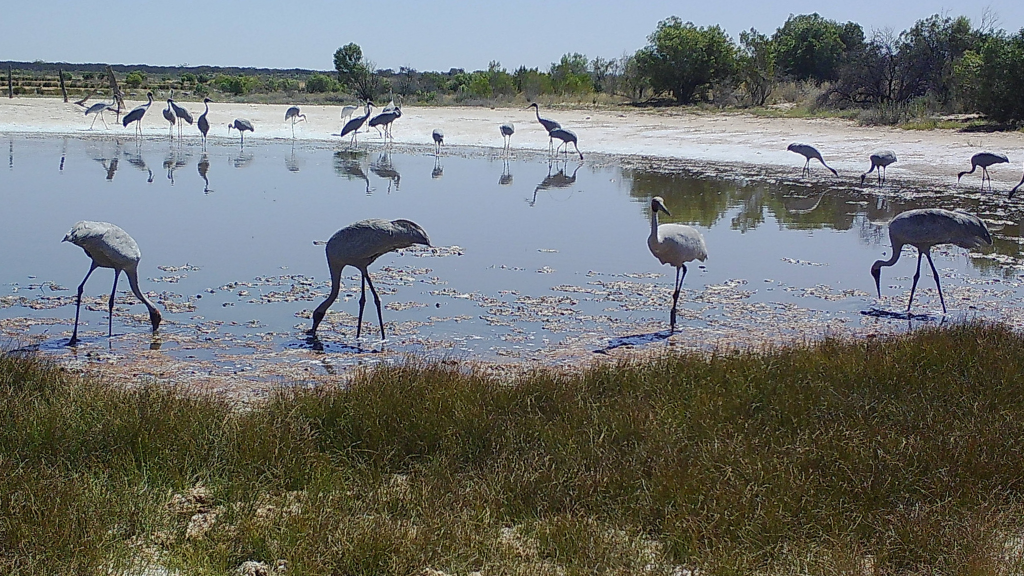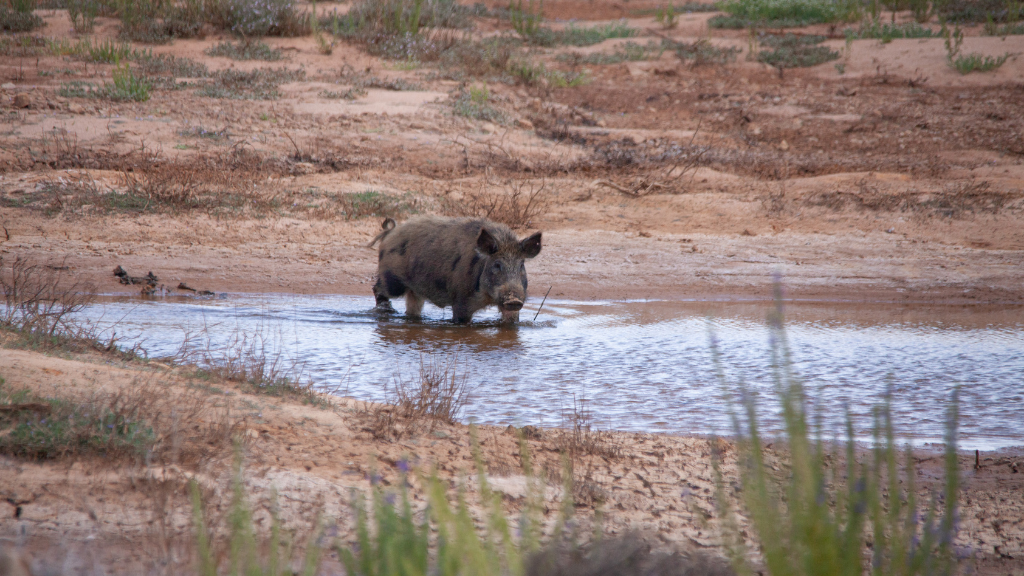
Pigs on a wetland in the lower Paroo River of western Queensland.
“This represents a significant dent in the pig population and graziers will really reap the benefits with less predation of young livestock or birthing adults, less disease, and less disturbance of pastures and fouling of water.”
Following the shoot in mid-October, project coordinators will now continue monitoring.
“Yeah we will continue to assess the situation with camera monitoring, reports from land managers, aerial and ground surveillance and watching those pig populations and of course keeping those conversations going with QPWS and the surrounding land managers,” Christine Crafter said.
“A collaborative approach like this will always work better than a single land manager trying to impact populations by themselves and it's great to see such a positive result for everyone involved,” Ms Crafter said.
“Pigs are just devastating to the environment and the damage they cause can be extensive, costing millions of dollars in lost production and environmental vandalism,” she said.
Currawinya National Park is one of Queensland’s most important inland wetland areas with Lakes Numalla and Wyara recognised internationally under the Ramsar Convention in 1996 for their outstanding wetland values and features.
“The wetlands are just flourishing now and they’re full of breeding waterbirds so the timely control of the pigs will also improve the success of the upcoming waterbird breeding season,” Christine Crafter said.
This project is supported by Southern Queensland Landscapes through funding from the Australian Government's National Landcare Program.
For more information on the Australian Government Regional Land Partnerships visit

Feral pigs destroy vegetation, reduce yield, and have major impacts on soil health and soil moisture.

The timely control of pigs around Currawinya National Park will improve the success of the upcoming waterbird breeding season.

Feral pigs are estimated to cost the agricultural industry an estimated $106.5 million every year.

Ground nesting birds like this baby masked lapwing (Vanellus miles) are defenceless against feral pigs.










